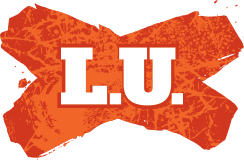Utter failure’: Sydney council mergers cost ratepayers millions
Most Sydney councils are paying tens of millions more on staffing costs than the equivalent council areas were prior to 2016’s amalgamations
Most Sydney councils are paying tens of millions more on staffing costs than the equivalent council areas were prior to 2016’s amalgamations, with the NSW government admitting there are no systems in place to judge the success of the policy that has cost $627 million.
Of the eight amalgamated councils in Greater Sydney, only two now spend less on total staffing costs than the equivalent area did in the 2014/15 financial year, prior to amalgamation, when adjusted for inflation.
The new figures have prompted Local Government Minister Ron Hoenig to blast forced council amalgamations as an “utter failure”, while former NSW Premier Mike Baird – who oversaw the move – said it was “disappointing” councils had not reduced costs.
One council, The City of Parramatta is unable to even compare its staffing costs due to records being unavailable.
It comes after The Daily Telegraph revealed this week that Northern Beaches Council spent almost $40m more on employee costs in the 2023/24 financial year than the costs of all three former councils combined in 2014/15, or $5.4 million more when adjusted for inflation.
Northern Beaches council also voted in January to slug residents with a nearly 40 per cent increase over three years.
When the former Liberal government created 19 new councils in 2016, then-Premier Mike Baird promised ratepayers the amalgamations would see savings of $2b over 20 years by slashing council bureaucracy.
Despite this promise, Canterbury-Bankstown, Georges River, Bayside, the Inner West and the Northern Beaches have failed to do so.
Canterbury-Bankstown spent more than $64.1 million more in total employee costs in 2023/24 than both Canterbury and Bankstown councils did pre-amalgamation in 2014/15, or $35.2 million more when adjusted for inflation.
The only two councils to spend less on wage costs last year were Cumberland and Central Coast councils.
Central Coast Council was forced to cut staffing costs after going into administration in 2021 after revelations that the council was operating under an $89 million deficit and was unable to pay staff.
The administration ended in September last year.
A spokesman for the City of Parramatta said they had no available metrics to be able to compare total employee costs for the equivalent area from pre-amalgamation to last year.
Local Government Minister Ron Hoenig said the forced council amalgamations had been an “utter failure” and said the Office of Local government had not set any KPIs or had any metric to judge the success of the policy.
Since 2016, $627 million has been spent through both the New Council Implementation Fund and the Stronger Communities Fund grants to pay for the council amalgamations.
“Most of the councils that were amalgamated are in shambles and are still trying to sort out their financials and service standards nearly a decade later,” Mr Hoenig said.
“There was zero accountability from the previous government.
“Merged councils were left to their own devices, with no checks or balances about how well these new councils were delivering for their communities.
“The reality is amalgamated councils haven’t shown the cost savings communities were promised.
“Instead, they’re bleeding money and delivering poorer quality services at higher costs to ratepayers.”
Former Premier Mike Baird defended the policy, saying amalgamated councils and the NSW government still had the “opportunity” to mandate efficiencies.
“The Councils were given a clear road map to reduce costs and improve development application (DA) times, and it is disappointing that in some cases this hasn’t occurred,” he said.
“This opportunity however, is still there for councils that decide to put ratepayers first.”
The Minister of Local government has the power to conduct a review into any council, which would include an audit of expenditure.
Inner West mayor Darcy Byrne, who served as mayor of Leichhardt council prior to its amalgamation, said in the first 18 months of the merger, a culture was created with a “lack of accountability to the community”.
“There was no board oversight,” he said.
“The reason we’re in a stronger financial position now is we had to make a tough decision to clean up upper middle management.
“There were a lot of people employed on big salaries not on front line service.
“If you have too many upper middle managers then no one takes responsibility.”
Mr Bryne said the council saved $22 million cutting middle managers at the time, but that it was in no way a requirement set by the then-NSW government.
While Inner West council have vowed not to seek a special rate variation within the next four years, annual reports show they are still spending $40.4 million more in total employee costs in the last financial year than the combined councils in 2014/15, or more than $12.8 million when adjusted for inflation.
This is despite their number of full time equivalent staff reducing by 54 in the last decade.

